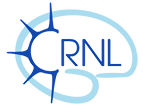Simon Thibault (Impact CRNL)
Simon Thibault (Impact CRNL)

Tool use is a hallmark of human evolution. Beyond its sensorimotor components, whose complexity has been extensively investigated, tool use impacts cognition. Tool use requires integrating an external object as a body part and embedding its functional structure in the motor program. Additionally, it has been proposed that brain areas involved in language have exapted neural resources devoted to tool use. Accordingly, researchers have advanced the existence of similarities between the processes underlying tool use and language, in line with the similarities for action and language suggested by the embodied cognition models. Thus, this thesis aims to further characterize the shared neural resources and reciprocal behavioral links between tool use and language.
In a first study, we used functional neuroimaging to test the existence of shared neural resources between tool use and two linguistic processes: phonology and semantics. For phonology, the participants performed a phonological identification task, whereas for semantics they underwent a semantic priming task with a lexical decision. Although tool use and phonology recruited contiguous regions in the inferior parietal lobe, no evidence for shared neural resources was found between those two functions. By contrast, multivariate analyses showed that the neural activity elicited by semantics was decoded within the tool-use neural network, in the left inferior frontal gyrus and the left occipitotemporal cortex.
In a second study, we tested the existence of shared neural substrates for tool use and syntactic processing. The participants performed a syntactic comprehension task requiring to process syntactic structures of different complexity. Results showed tool use and complex syntax (i.e. object relatives) elicited neural activity anatomically co-localized within the basal ganglia. Multivariate analyses revealed similar spatial distributions of neural patterns prompted by tool use and object relative processing. Moreover, the shared neurofunctional resources are reflected behaviorally by cross-domain learning transfer: tool-use training significantly improves linguistic performance for complex syntax, and reciprocally, complex syntax training improves motor performance with the tool. No learning transfer was observed on language syntactic abilities if participants trained without the tool, nor on tool use if participants trained with simpler syntactic structures (i.e. subject relatives).
Our findings show the existence of shared neural resources between tool use and language, pointing to the existence of a supramodal syntactic function shared between the motor and the language domains. More generally our work opens perspectives to develop learning or rehabilitation protocols taking advantage of the crossdomain learning transfer. From an evolutionary point of view, our results reinforce the hypothesis of a co-evolution between tool use and language, leading to shared neural resources for these two abilities.
CRNL - CH Le Vinatier - Bâtiment 462 Neurocampus Michel Jouvet - Amphithéâtre











